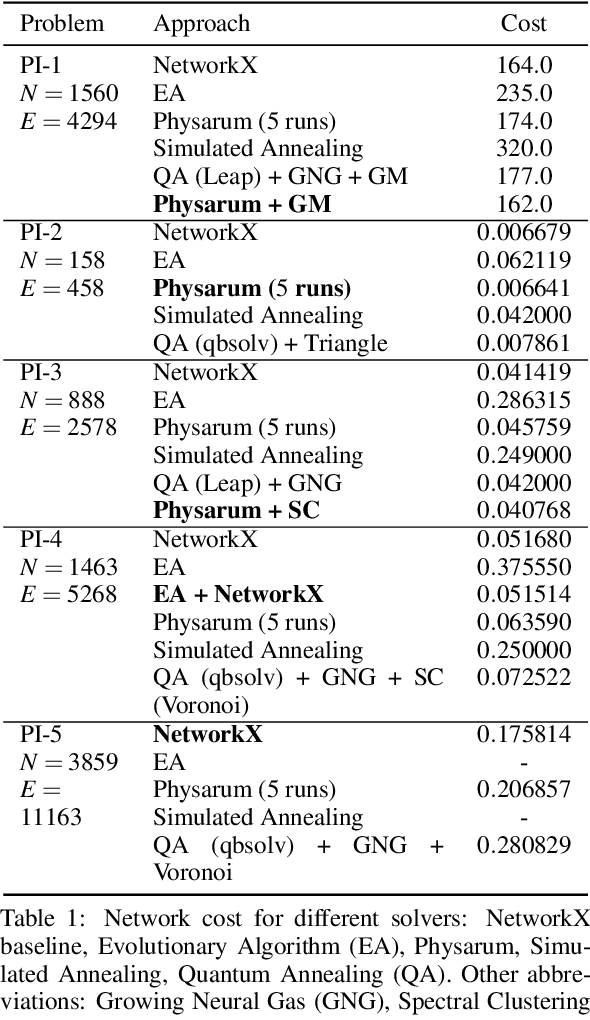Marc Geitz
Solving Large Steiner Tree Problems in Graphs for Cost-Efficient Fiber-To-The-Home Network Expansion
Sep 22, 2021



Abstract:The expansion of Fiber-To-The-Home (FTTH) networks creates high costs due to expensive excavation procedures. Optimizing the planning process and minimizing the cost of the earth excavation work therefore lead to large savings. Mathematically, the FTTH network problem can be described as a minimum Steiner Tree problem. Even though the Steiner Tree problem has already been investigated intensively in the last decades, it might be further optimized with the help of new computing paradigms and emerging approaches. This work studies upcoming technologies, such as Quantum Annealing, Simulated Annealing and nature-inspired methods like Evolutionary Algorithms or slime-mold-based optimization. Additionally, we investigate partitioning and simplifying methods. Evaluated on several real-life problem instances, we could outperform a traditional, widely-used baseline (NetworkX Approximate Solver) on most of the domains. Prior partitioning of the initial graph and the presented slime-mold-based approach were especially valuable for a cost-efficient approximation. Quantum Annealing seems promising, but was limited by the number of available qubits.
Solving the Extended Job Shop Scheduling Problem with AGVs -- Classical and Quantum Approaches
Sep 10, 2021



Abstract:The subject of Job Scheduling Optimisation (JSO) deals with the scheduling of jobs in an organization, so that the single working steps are optimally organized regarding the postulated targets. In this paper a use case is provided which deals with a sub-aspect of JSO, the Job Shop Scheduling Problem (JSSP or JSP). As many optimization problems JSSP is NP-complete, which means the complexity increases with every node in the system exponentially. The goal of the use case is to show how to create an optimized duty rooster for certain workpieces in a flexible organized machinery, combined with an Autonomous Ground Vehicle (AGV), using Constraint Programming (CP) and Quantum Computing (QC) alternatively. The results of a classical solution based on CP and on a Quantum Annealing model are presented and discussed. All presented results have been elaborated in the research project PlanQK.
 Add to Chrome
Add to Chrome Add to Firefox
Add to Firefox Add to Edge
Add to Edge